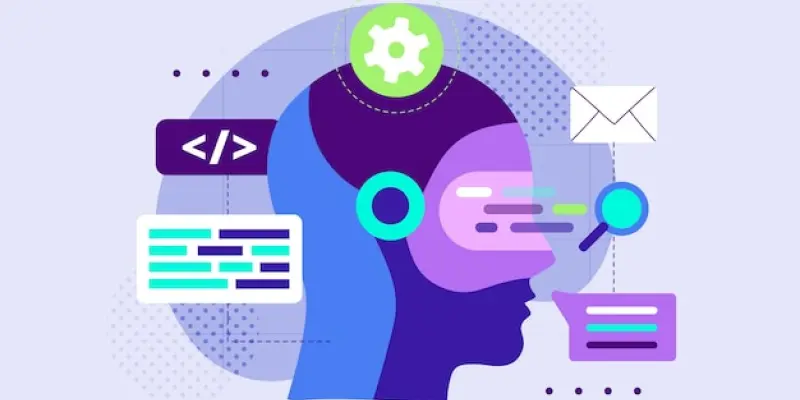In an ever-evolving technological landscape, the rise of no-code AI platforms in 2025 has become a transformative milestone, democratizing access to powerful artificial intelligence tools previously reserved for highly skilled developers. These innovative platforms have revolutionized the development of AI-driven applications and workflows by eliminating the requirement for extensive programming expertise, opening new doors for non-technical users. Business analysts, marketers, and managers can independently create intelligent workflows, significantly impacting various industries. This newfound accessibility enables organizations to harness the power of AI quickly, efficiently, and cost-effectively, fostering unprecedented levels of innovation and productivity.
By leveraging no-code AI platforms, businesses can now empower non-developers to take an active role in technological advancements. This shift marks a departure from traditional development paradigms, wherein creating sophisticated AI applications demanded substantial investments in time and technical knowledge. The convenience offered by no-code solutions means that teams with limited technical backgrounds can efficiently design, test, and deploy AI applications. Consequently, organizations enjoy faster development cycles and reduced operational costs. With intuitive interfaces and drag-and-drop functionality, these platforms minimize the learning curve, making AI development an achievable goal for a broader range of professionals.
Advantages of No-Code AI Platforms
The primary advantage of no-code AI platforms lies in their accessibility for non-developers, enabling users without extensive technical skills to build sophisticated AI-driven applications. This democratization of AI development has led to a significant reduction in the time and resources needed to create AI solutions. Businesses can now fast-track their development processes, allowing them to deploy new applications and workflows in a matter of weeks rather than months. Additionally, the cost-effectiveness of no-code solutions makes them attractive to companies of all sizes, particularly startups and small to medium-sized enterprises (SMEs), which often operate with limited budgets.
No-code AI platforms also offer customizable and flexible options, allowing users to tailor applications to their specific needs without the constraints of predefined templates. The modular nature of these platforms means that users can mix and match various components to create unique solutions that meet their requirements. Furthermore, the scalability of no-code AI platforms, thanks to their cloud-based infrastructure, ensures that applications can easily adapt to changing needs and growing user bases. As businesses evolve, the ability to quickly and efficiently scale AI solutions becomes a critical factor in maintaining competitiveness and achieving long-term success.
Drawbacks of No-Code AI Platforms
Despite the myriad advantages of no-code AI platforms, some notable drawbacks cannot be overlooked. One significant limitation is the restricted customization options for complex AI tasks, which may not be feasible for users with specific, high-performing requirements. These platforms are designed to cater to a broad audience, and as such, they may lack the granular control offered by traditional coding methods. This can be a hindrance for organizations that require highly specialized AI solutions, compelling them to seek hybrid approaches that combine no-code tools with conventional programming techniques.
Another concern is the potential risk of vendor lock-in due to subscription-based models. Businesses that rely heavily on a specific no-code platform may find themselves dependent on the provider for updates, new features, and continued support. This dependency can pose significant challenges if the vendor experiences issues, alters their pricing structure, or discontinues the platform. Additionally, data privacy concerns arise when using cloud-based no-code AI platforms, as sensitive information may be stored and processed on third-party servers. Companies must carefully evaluate the security measures implemented by platform providers to ensure their data remains protected.
Diverse Use Cases in Various Sectors
No-code AI platforms have found applications across a wide range of sectors, demonstrating their versatility and effectiveness. In 2025, one prominent use case is customer service automation, where businesses deploy AI-powered chatbots and virtual assistants to handle routine inquiries and support tasks. These intelligent agents can provide quick and accurate responses to customer queries, significantly enhancing service quality and reducing the workload on human agents. Predictive analytics is another area where no-code AI platforms excel, enabling businesses to forecast market trends, optimize decision-making, and identify potential opportunities or risks.
In the realm of content creation, marketing teams leverage no-code AI to generate personalized materials tailored to specific audiences. By analyzing customer data, these tools can craft targeted campaigns that resonate with individual preferences and behaviors, driving engagement and conversions. Healthcare services also benefit from no-code AI platforms, as they facilitate the development of patient management tools that streamline administrative processes and improve patient care. In education, adaptive learning systems powered by no-code AI are transforming the way students learn, offering personalized experiences that cater to each student’s unique needs and learning pace.
The Future of No-Code AI Platforms
In the ever-evolving world of technology, the advent of no-code AI platforms by 2025 marks a significant milestone, democratizing access to powerful AI tools that were once exclusive to highly skilled developers. These platforms have transformed AI-driven application and workflow development by removing the need for extensive programming knowledge, thus opening new opportunities for non-technical users. Business analysts, marketers, and managers can now independently create intelligent workflows, making a substantial impact across various industries. This newfound accessibility allows organizations to quickly, efficiently, and cost-effectively harness the power of AI, resulting in unprecedented levels of innovation and productivity.
By leveraging no-code AI platforms, businesses enable non-developers to take part in technological progress. This shift represents a move away from traditional development paradigms requiring significant investments of both time and technical expertise. The user-friendly nature of no-code solutions, with intuitive interfaces and drag-and-drop functionality, means that teams with limited technical backgrounds can easily design, test, and deploy AI applications. As a result, organizations benefit from quicker development cycles and lower operational costs, making AI development an achievable goal for a broader range of professionals.

